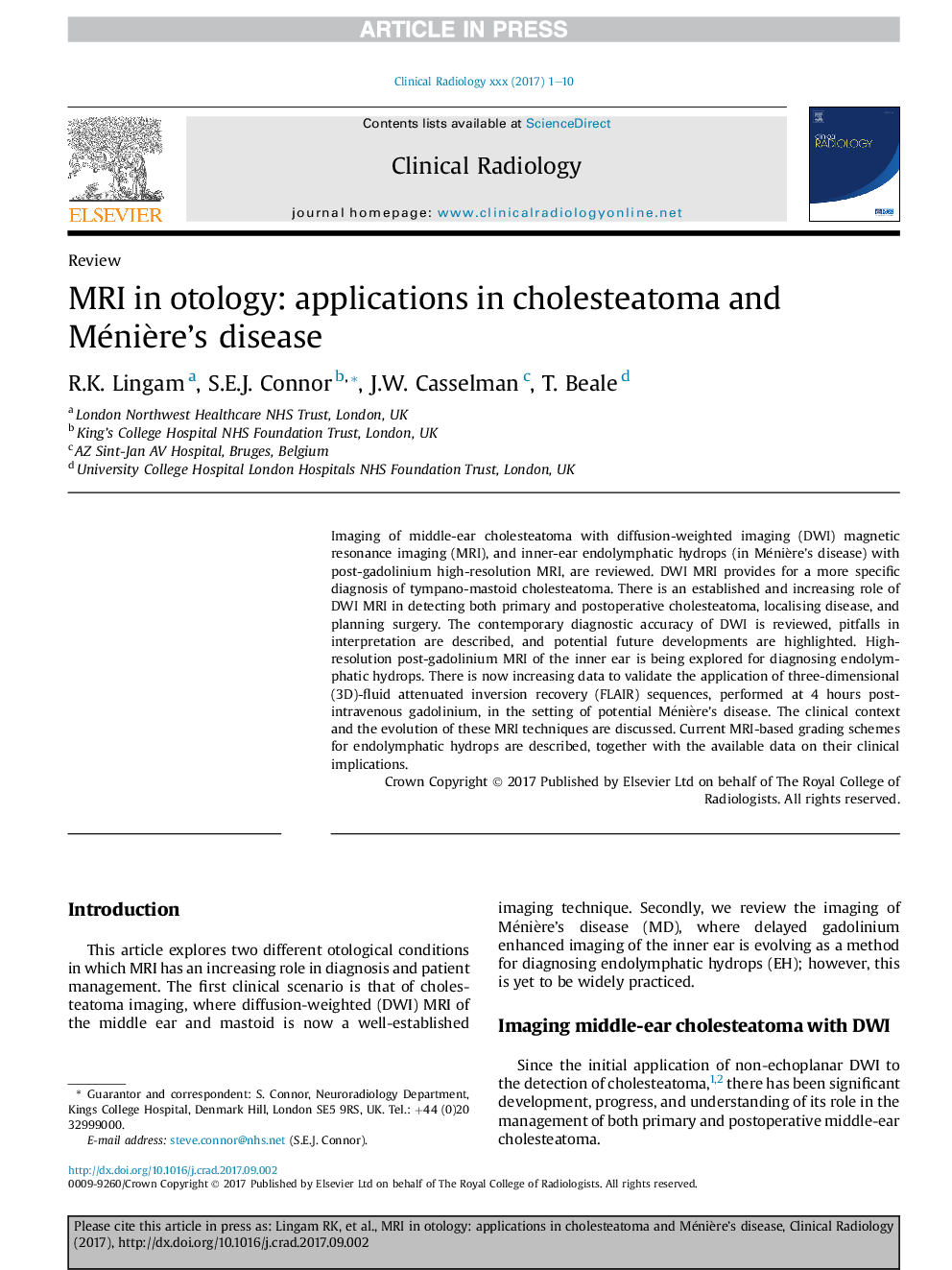| Article ID | Journal | Published Year | Pages | File Type |
|---|---|---|---|---|
| 8786597 | Clinical Radiology | 2018 | 10 Pages |
Abstract
Imaging of middle-ear cholesteatoma with diffusion-weighted imaging (DWI) magnetic resonance imaging (MRI), and inner-ear endolymphatic hydrops (in Ménière's disease) with post-gadolinium high-resolution MRI, are reviewed. DWI MRI provides for a more specific diagnosis of tympano-mastoid cholesteatoma. There is an established and increasing role of DWI MRI in detecting both primary and postoperative cholesteatoma, localising disease, and planning surgery. The contemporary diagnostic accuracy of DWI is reviewed, pitfalls in interpretation are described, and potential future developments are highlighted. High-resolution post-gadolinium MRI of the inner ear is being explored for diagnosing endolymphatic hydrops. There is now increasing data to validate the application of three-dimensional (3D)-fluid attenuated inversion recovery (FLAIR) sequences, performed at 4 hours post-intravenous gadolinium, in the setting of potential Ménière's disease. The clinical context and the evolution of these MRI techniques are discussed. Current MRI-based grading schemes for endolymphatic hydrops are described, together with the available data on their clinical implications.
Related Topics
Health Sciences
Medicine and Dentistry
Oncology
Authors
R.K. Lingam, S.E.J. Connor, J.W. Casselman, T. Beale,
